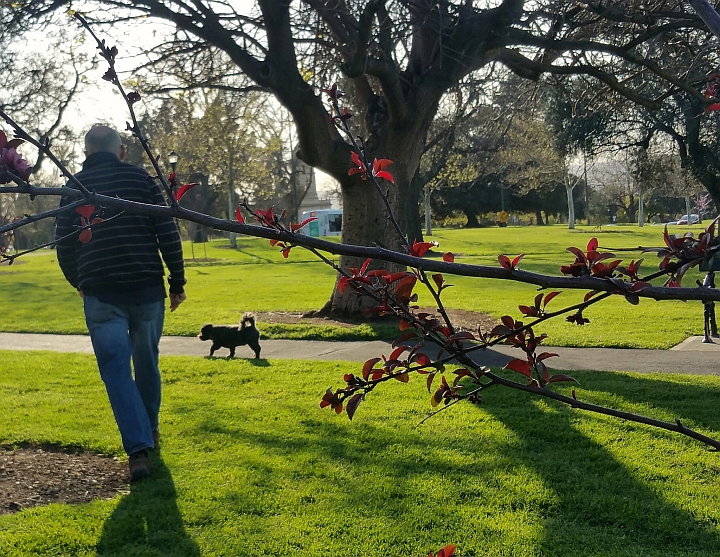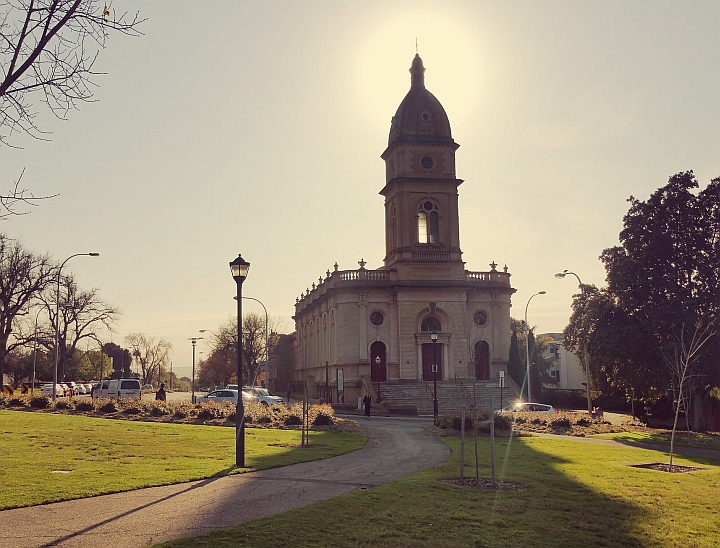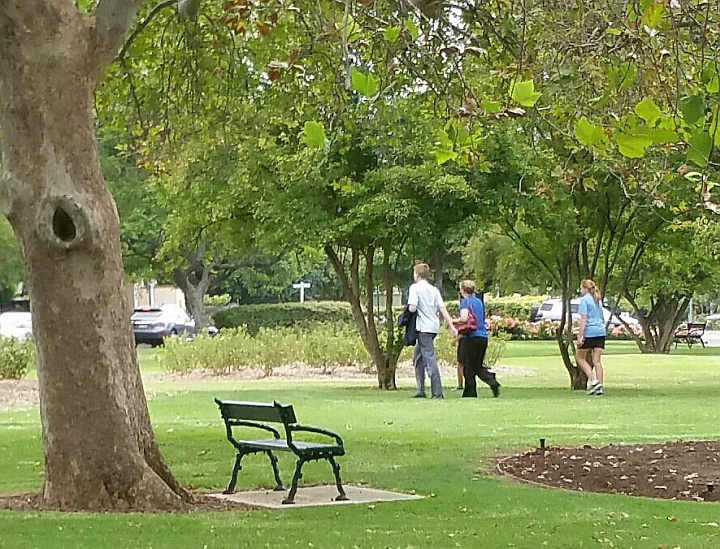Park 29
English name: Brougham Gardens
Kaurna name: Tantutitingga (meaning "native lilac place")
Features: A floral clock (from 1986) and flagpole (2005). A 'Teddy Love' chair (2007). Adjacent to the Gardens is the historic (1860) Brougham Place Uniting Church, with its distinctive tower that was added in 1871. Rose gardens have been maintained in this Park since 1905.
Bounded by: Brougham Place
Brougham Gardens / Tantutitingga (Park 29)
Trail Guide to Parks 28 & 29
Take your own self-guided walk at any time, using our Trail Guide to Parks 28 and 29. Click or tap on the image below.
The Trail starts at the top of the hill, on the corner of O’Connell Street and Brougham Place.
The Trail is about 2 km. Allow 90 minutes.
Click on the pic to start the Trail Guide through “The formal Gardens of North Adelaide” Parks 28 and 29, starting at the corner of O’Connell Street and King William Road (#1 on the map above).
Park 29 was named after Lord Brougham (1778-1868) Lord High Chancellor of the United Kingdom and founder of the London University.
The Kaurna translation of Tantutitingga is native lilac place. Native lilac (Hardenbergia violacea) flowers on the shortest day of the year and is a sign of hope. Its name was proposed because of the gardens’ close proximity to the Adelaide Women’s and Children’s Hospital.
In 1972 Aboriginal people established a tent embassy in Brougham Gardens in support of the embassy that was started in the same year on the grounds of Parliament House in Canberra.
Related links:











